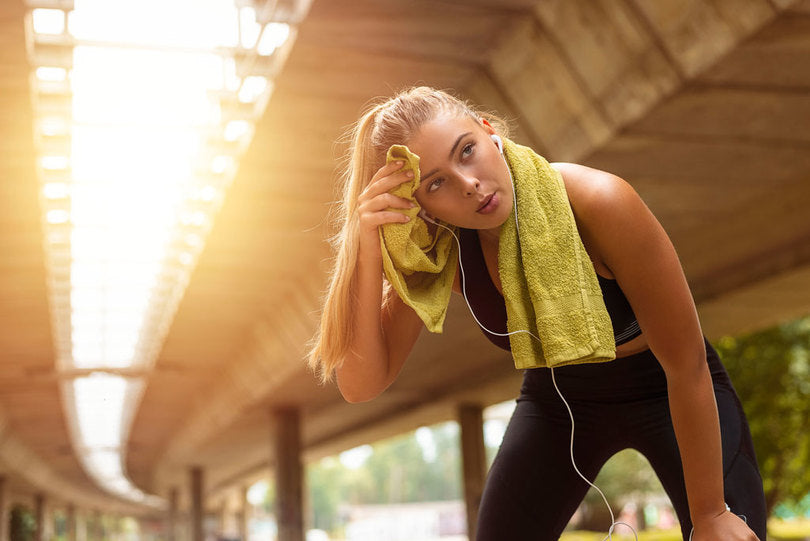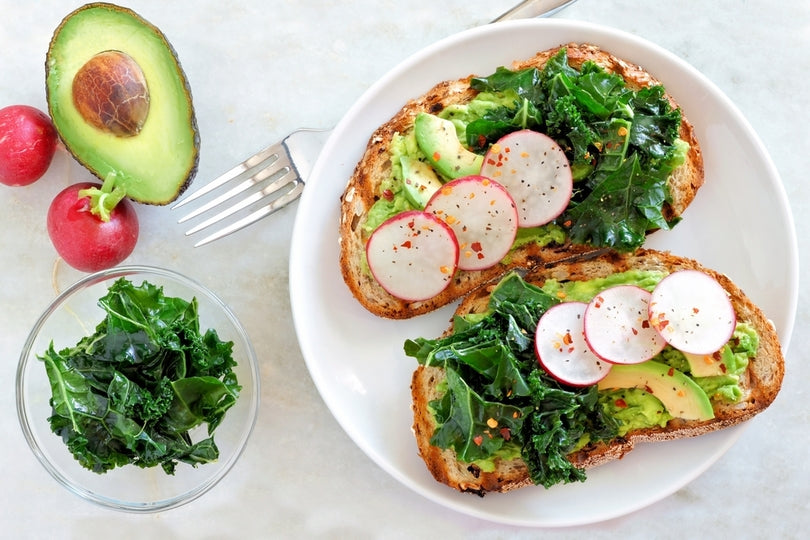Common Injury Concerns While Working Out


I'm sure many of us have experienced at least one (if not all) of these pains/injuries whilst working out! They can start off as small annoyances but if not taken care of and rectified, they can lead to serious injuries further down the track. It is important to workout, however, if you are not using correct technique, then sometimes you can be doing more harm than good! It is all about listening to your body and understanding why what you are doing may be wrong.
Common Exercise Injuries
These are some of the more common injury concerns I hear from ladies when they start working out.
Sore Neck While Training Abs
Ab exercises are some of my favourite exercises (I'm crazy I know!), but it is so satisfying to see your abs pop one day after all the hard work you have put in! I love how the more you train your abs, the stronger your core gets and you are suddenly able to do more reps, or exercises you never thought you could do.
One of the BIGGEST injuries/concerns while training abs is "my neck hurts". It can be extremely hard to concentrate on the exercise properly when you're in pain and your mind is elsewhere. Usually the cause of neck pain while doing crunches means your form is compromised and you aren't performing them correctly. Here are some ways to fix your form:
Don't strain your neck.
Many of us tend to jerk our heads forward when performing crunches because it may produce momentum and make the exercise easier to complete. This puts large amounts of strain on the muscles at the back of your neck but it also reduces the effectiveness of the exercise. When performing crunches try to think of your core muscles doing all the work and engage them as best you can, this may take some focus but it gets easier!
Don't hold your hands behind your neck.
If you place your hands behind your neck this may tempt you to pull yourself forward. Instead, try resting your hands on your stomach or on the floor. Alternatively, if your neck is not strong enough to stay upright throughout the exercise, place your hands behind your ears to support it, but do not pull forward on your neck. A great tip to remember is there needs to be a gap the size of a fist between your chin and upper chest. Do not rush crunches. Take your time. Do them slowly and correctly, and you will find your muscles become stronger the more you do and eventually you will be able to tell the difference of pulling yourself up through your core and your neck.
Try to place the tip of your tongue on the roof of your mouth.
This is a quick trick you can try when crunching! Doing this will help relax your neck muscles and reduce strain.
Knees Hurt While Squatting
Many people complain about knee pain when squatting both with a bar and without. We know the benefits of squats mainly concentrate around one area - our bums! The last thing you want is knee pain when you are using your whole body to support your bodyweight or bar weight. One of the most common reasons for knee pain while squatting is incorrect technique which then leads to unwanted stress on the knee joint. Here are some things you may be doing wrong:
Your weight is too far forward and knees are over the toes at the bottom of the squat.
In an ideal squat your centre of gravity should be in the middle of your foot (even slightly behind) and your heels should always be flat on the ground. If you lean too far forward you are placing stress on the musculature around the knee causing pain.
Initiating movement by bending at the knees.
If you squat just using your knees this will often cause your weight to come forward at the bottom, putting pressure on your knees and this also goes back to the point above. Initiate the squat by bending at the knee and hips simultaneously - this will promote better form and take the stress off your knees.
You are shifting weight onto one leg more than the other.
This can put unwanted stress on either knee joint. Make sure you can feel your weight centred over both feet at the beginning of the squat and throughout the movement.
If you are new to squatting and are finding it hard to balance your weight, try squatting with a box. You can play with the box height to determine when your knee pain occurs, and focus on touching your bum to the box to learn the correct position. Some other tips are to make sure you stretch and foam roll all of your leg muscles after each workout (including the insides and outsides of your upper legs). If you are completing any of my programs, you will know that many of the exercises involve jumping, which makes it even more important to stretch and foam roll to reduce pain and future injuries.
Shin Splints
Shin splints can be one of the most painful and annoying injuries you can sustain while working out. I don't tend to run for long distances at a time as I prefer to do HIIT (High Intensity Interval Training), however even this can cause dreaded shin splints.
If you are not sure what shin splints are, let me explain. Medial tibial stress syndrome (shin splints) refers to pain felt anywhere along the shinbone from the knee to the ankle. People who play sports or do a lot of running will typically get shin splints and one of the common reasons is overuse, or if you are trying to exercise beyond your current level of fitness.
Another reason why you may get shin splints is through high impact activities such as running on hard or uneven surfaces, or fast-paced walking up a hill. There are many causes for shin splits, but they all have the same thing in common and that is the repeated loading of the ankle over a long period of time.
When trying to fix shin splints you need to address the issues from the ground up. You need to be able to stabilise your leg in order to help ease the pain of shin splints. Having the correct shoes play a MASSIVE role in this, they need to be able to support your ankle and foot correctly so you don't develop an injury.
I love my favourite sneakers, but I cannot wear them when doing plyometrics or HIIT workouts as they do not offer enough support for my foot. So I change into something that offers that support. Everybody is different so I recommend you get your feet checked before deciding on which shoe to buy. Comfort and functionality is WAY more important than "fashion" in my opinion.
After you have the correct shoes, here are some more tips on combating shin splints:
- Foam roll your shins gently on the outer sides
- Foam roll your calves from the top to bottom
- Stretch your calves
- Do standing calve raises ( 3 sets of 20 several times a week).
Next time you are working out and notice one of these injury concerns, stop for a minute and re-adjust what you are doing. Trust me, your body will thank you for it.
* Disclaimer: This blog post is not intended to replace the advice of a medical professional. The above information should not be used to diagnose, treat, or prevent any disease or medical condition. Please consult your doctor before making any changes to your diet, sleep methods, daily activity, or fitness routine. Sweat assumes no responsibility for any personal injury or damage sustained by any recommendations, opinions, or advice given in this article.




<#= c.user.username #><#= moment(c.created_at * 1000).fromNow() #>
<#= c.html_body #> <# if (c.images) { #>
<# } #>